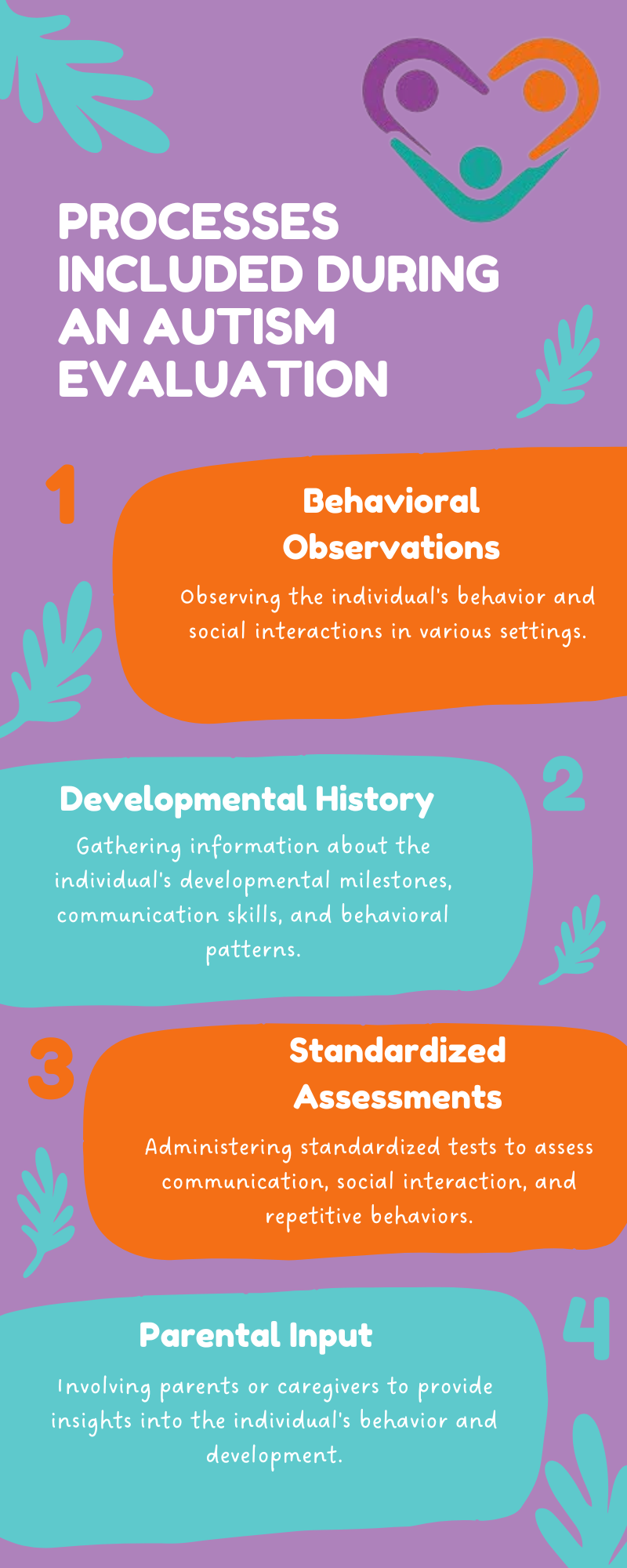Autism is a term that sparks a wide range of thoughts and emotions. For some, it brings to mind a loved one who sees the world uniquely. For others, it’s a topic filled with questions and curiosity.
Although we may hear about autism often, the full picture can be a bit of a mystery. Autism is a spectrum that touches each individual differently, shaping how they connect, communicate, and experience life.
As we peel back the layers, we can discover a deeper understanding of the diverse and vibrant experiences of the autistic community.
What is Autism?
Autism is characterized by a range of challenges, including social communication deficits, behavioral patterns, and sensory sensitivities. While the exact cause of autism remains unknown, it is believed to involve a combination of genetic and environmental factors.
Individuals with autism may struggle to interpret social cues, express emotions, and form relationships.
As a spectrum disorder, autism presents differently in each individual. Some individuals with autism may have exceptional abilities in certain areas, while others may face significant challenges in everyday tasks. The spectrum nature of autism highlights the diverse range of abilities and needs within the autism community.
This emphasizes the importance of personalized support and interventions tailored to each individual’s strengths and challenges.
Understanding autism as a spectrum disorder is crucial in recognizing and appreciating the unique characteristics and capabilities of individuals with autism. By acknowledging the variability of autism presentations, we can promote acceptance, understanding, and inclusivity for individuals across the spectrum.
Causes and Risk Factors
Understanding the origins of autism involves exploring various potential influences, including genetic and environmental triggers.
One of the primary considerations regarding the causes of autism revolves around genetic factors.
According to research, autism can be inherited within families, indicating a genetic component in certain cases. Individuals with specific genetic conditions, such as Fragile X Syndrome and Tuberous Sclerosis, have an increased risk of being diagnosed with autism.
Variations in genetic makeup may contribute to the development of autism spectrum disorder, although the exact genetic mechanisms remain a subject of ongoing study.
In addition to genetic predispositions, environmental causes are also believed to play a role in autism spectrum disorder.
Environmental triggers encompass a wide range of elements, including prenatal influences and early childhood experiences. Certain medications taken during pregnancy, like valproic acid and thalidomide, have been associated with a higher risk of autism. Environmental exposures, such as pollutants and toxins, may also influence the manifestation of autism in susceptible individuals.
The interaction between genetic factors and environmental triggers is complex and multifaceted. While genetic predispositions may increase the susceptibility to autism, environmental influences can potentially act as catalysts for the expression of autism-related traits. It is crucial to consider both genetic and environmental aspects when exploring the causes and risk factors associated with autism spectrum disorder.

Signs and Symptoms of Autism
To further understand autism, we have to recognize its signs and symptoms as it’s crucial for early intervention and support.
One of the hallmark characteristics of autism is communication challenges. Individuals with autism may struggle with understanding others’ thoughts and emotions, as well as expressing themselves effectively. This difficulty in communication can manifest in various ways, such as:
- Limited Verbal Communication: Some individuals with autism may have a limited vocabulary or difficulty forming full sentences.
- Nonverbal Communication: Gestures, facial expressions, and body language may be challenging for individuals with autism to interpret and use.
- Social Communication: Difficulty engaging in conversations, maintaining eye contact, or understanding social cues.
As such, caregivers and individuals themselves should be patient and provide support in developing alternative communication strategies, such as visual aids or sign language, to bridge the communication gap.
Behavioral patterns in individuals with autism can also vary widely and may include repetitive behaviors, limited interests in specific topics, and challenges with transitions and changes in routine. Some common behavioral patterns seen in individuals with autism include:
- Repetitive Behaviors: Engaging in repetitive movements or actions, such as hand flapping, rocking, or repeating certain words.
- Rigid Routine: A strong preference for routine and difficulty coping with changes in schedule or environment.
- Intense Interests: Focusing intensely on specific topics or activities to the exclusion of others.
Understanding and accommodating these behavioral patterns can help create a supportive environment that promotes independence and well-being for individuals on the autism spectrum.
Lastly, autistic individuals often experience sensory sensitivities, which can affect how they perceive and react to sensory inputs from the environment. Sensory sensitivities can manifest in various ways, including:
- Hypersensitivity: Heightened sensitivity to sensory stimuli such as loud noises, bright lights, certain textures, or strong smells.
- Hyposensitivity: Reduced sensitivity to sensory input, leading to seeking intense sensory experiences like deep pressure or stimulation.
Providing autistic individuals with a sensory-friendly environment that accommodates individual sensitivities, such as using noise-canceling headphones or providing fidget toys for tactile stimulation, can help them regulate their sensory experiences and promote comfort and well-being.
Diagnosis and Prevalence
Autism diagnosis involves an evaluation conducted by a team of healthcare professionals, including psychologists, speech therapists, and developmental pediatricians. This evaluation typically includes:

It’s important to note that there is no specific medical test for diagnosing autism. Instead, healthcare providers rely on behavioral observations and developmental assessments to reach a diagnosis.
Early detection and intervention are key in improving outcomes for individuals with autism.
The rise in autism diagnoses in recent years can be attributed to improved awareness, changes in diagnostic criteria, and increased access to services. While some genetic and environmental factors may contribute to the development of autism, it’s essential to recognize that each individual with autism is unique and may present with different strengths and challenges.
Genetic conditions like Fragile X Syndrome and environmental factors such as certain medications taken during pregnancy have been associated with an increased risk of autism. However, more research is needed to fully understand the complex interplay of genetic and environmental influences on the development of autism.

Treatment and Interventions
Various treatment options and interventions are available to assist individuals in managing their condition and enhancing their quality of life. These treatments can be broadly categorized into effective therapies and complementary approaches.
Effective therapies play a crucial role in the treatment of autism spectrum disorder by targeting specific challenges and promoting skill development in individuals with autism.
Some of the most commonly used and evidence-based therapies include:
- Applied Behavior Analysis (ABA): A structured intervention that focuses on behavior modification and skill acquisition through positive reinforcement. ABA therapy is highly individualized and tailored to meet the unique needs of each individual with autism.
- Speech Therapy: A treatment approach that targets communication challenges, including speech and language difficulties. Speech therapy aims to improve expressive and receptive language skills, social communication, and pragmatic language abilities.
- Occupational Therapy: Occupational therapy addresses sensory sensitivities, motor skills, self-care tasks, and overall independence. This therapy helps individuals with autism develop essential life skills and improve their daily functioning.
These evidence-based therapies are effective in helping individuals with autism improve their communication, social interactions, and skills for everyday life. Caregivers and healthcare providers need to collaborate in designing and implementing a comprehensive treatment plan that integrates these therapies effectively.
In addition to evidence-based therapies, some individuals may explore complementary and alternative interventions to supplement traditional treatment methods. It is important to note that while these approaches may be popular, most of them lack scientific evidence to support their efficacy in treating autism spectrum disorder.
Some common complementary approaches include:
- Dietary Interventions: Some individuals with autism may follow specialized diets, such as gluten-free or casein-free diets, in an attempt to alleviate symptoms. However, the scientific evidence supporting the effectiveness of these diets in managing autism is limited.
- Sensory-Based Interventions: Sensory-based interventions, such as sensory integration therapy and sensory diets, aim to address sensory sensitivities and improve sensory processing in individuals with autism. While these interventions may provide sensory relief, their overall impact on core symptoms of autism is still under investigation.
- Alternative Therapies: Various alternative therapies, including music therapy, art therapy, and animal-assisted therapy, are often used as complementary approaches in the treatment of autism. These therapies can offer emotional and sensory benefits but should be used in conjunction with evidence-based interventions for optimal results.
Before considering any complementary approach, individuals and caregivers should consult with healthcare professionals and seek guidance from qualified practitioners to ensure the safety and appropriateness of the interventions for individuals with autism.
It is essential to approach treatment comprehensively, combining evidence-based therapies with complementary approaches, to support the holistic well-being and development of individuals with autism spectrum disorder.

Conclusion
Autism is a unique way of experiencing the world. It brings its own set of challenges, but it also offers incredible strengths, creativity, and perspectives that enrich our lives.
Understanding autism helps us appreciate the diverse ways people think, feel, and interact. By embracing this diversity, we create a more inclusive and compassionate world where everyone can thrive and feel valued.
Through awareness, patience, and kindness, we can support those on the autism spectrum, empowering them to share their gifts and talents with the world. At Golden Care Therapy, we provide top-quality ABA therapy in New Jersey, tailored to meet the unique needs of each individual.
Our experienced team is dedicated to delivering personalized care that makes a real difference. If you’re looking for compassionate and effective support, reach out to us today to learn more about our services and how we can help your loved one thrive.
Sources:



